Little known facts of well known events.
When it comes to successful experience in the combat use of air defense forces, the most common example is the Vietnam War. Many books and articles have been written on this subject. In this regard, I would like to recall only a few figures characterizing the scale of hostilities of that time. During the period from August 5, 1964 to December 31, 1972, 4181 American aircraft (including unmanned aerial vehicles and helicopters) were shot down by Vietnam's air defense systems. Of these, anti-aircraft artillery destroyed 2568 aircraft (60% of all losses aviation USA). Fighter aircraft shot down 320 American aircraft (9%), but lost 76 combat vehicles itself. Anti-aircraft missile troops equipped with S-75 air defense systems shot down 1293 aircraft (31%), of which 54 are strategic B-52 bombers. The consumption of missiles, including combat losses and malfunctions, amounted to 6806 units, or an average of 5 missiles per destroyed target. Given the low cost of missiles (compared to aircraft), this is a very good indicator. Over the entire period of hostilities, US aviation was able to disable only 52 of the S-75 anti-aircraft missile battalions out of 95. For their contribution to the victory over the American aggressors, the Vietnamese People’s Army anti-aircraft missile troops were awarded the rank of "Army Type - Hero."
From the fire of the C-75 air defense system, the USA lost in Vietnam the 54 B-52 strategic bombers.
The Middle East conflicts are usually viewed as the antipode to the Vietnam War. On their example, they are trying to show the inefficiency of the Soviet air defense systems in the fight against modern aviation of a potential enemy. At the same time, ignorance or intentionally hides the facts that led to the defeat of the Arab armies. In particular, until now almost nothing is said about the first hours before the start of the “six-day war” 1967. And here there is something to think about! The time of the Israeli attack, 5 Jun 7.45 in the morning, surprisingly "coincided" with the breakfast of the Egyptian pilots at the military air bases and the departure of the special cruise of the Minister of Defense of Egypt to the Sinai Peninsula. Shortly before the outbreak of war, President G.A. Nasser received information about the threat of a military coup. Allegedly, in order that potential insurgents could not bring down the side with the Egyptian generals, in part of the air defense received the command to turn off all radar facilities. As a result, Israeli aircraft 183 from the Mediterranean were able to cross the Egyptian border unnoticed and deliver a devastating bombing attack on military airfields. Already at 10.45 in the morning, Israeli aviation gained complete air supremacy. The loss of vigilance, the temporary cessation of control over the airspace and outright betrayal among the country's top military leadership caused the Egyptian army to be defeated during the Six Day War.
In the fall of 1973, Egypt and Syria decided to take military revenge. In violation of pan-Arab solidarity, King Hussein of Jordan warned the Israeli leadership of the timing of the start of the military operation. However, the Egyptians with the help of a double agent in their government were able to misinform the Israeli military about the time of the outbreak of hostilities. On October 6 at 14.00 p.m. Egyptian soldiers on landing boats crossed the Suez Canal and captured 5 bridgeheads. With the help of hydraulic monitors, they washed the passages in the Bar-Leva line, which was a 160 km long sandy wall with 32 concrete fortifications. After that, the Egyptians built pontoon bridges and rushed to the Sinai Peninsula. Walking from 8 to 12 km, Egyptian Tanks stopped under cover of air defense systems S-75, S-125 and "Square" (export version of the air defense system "Cube"). The Israeli Air Force tried to strike at the Egyptian forces, but anti-aircraft missile divisions shot down 35 Israeli aircraft. Then the Israelis launched a tank counterattack, but leaving 53 wrecked tanks on the battlefield, they retreated. A day later they repeated the counterattack, but the losses in aviation and armored vehicles were catastrophic.
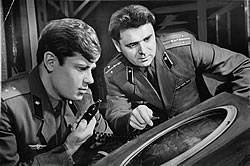 The Soviet school of air defense was unsurpassed.
The Soviet school of air defense was unsurpassed.Having achieved initial success, the Egyptians did not begin to develop the offensive, as they feared that their tanks would be out of range of the air defense systems and would be destroyed by enemy aircraft.
A week later, at the request of the Syrians, the Egyptian tanks still moved forward, but the Israeli helicopters equipped with an ATGM 18 destroyed most of them. Inspired by the success, Israeli special forces in Arabic form leaked to the other side of the canal and destroyed part of the anti-aircraft missile systems. Another detachment of disguised special forces on the PT-1967 and BTR-76P Soviet-made amphibious tanks captured at the junction of two Egyptian divisions was able to force the Great Bitter Lake. After the bridgehead was captured, the sappers made a pontoon bridge. Pulling up armored vehicles, Israeli tank groups, like a skating rink, marched south as far as Suez along the surviving Egyptian anti-aircraft missile divisions, at the same time destroying the crossings. As a result, the 50-I Egyptian army was on the Sinai Peninsula without air defense cover and in full surroundings. Now the planes and helicopters of Israel, like targets on the test site, could shoot Egyptian armored vehicles with impunity. Thus, the third cemetery of Soviet tanks appeared (after the Kursk Bulge and the Zelow Heights near Berlin).
Despite the defeat of the land forces of Egypt and Syria and the poor interaction of the ZRV with its aircraft, in general, the air defense units of both Arab countries acted quite successfully. During the 18 days of combat, 250 aircraft were destroyed, which is 43% of the Israeli Air Force combat strength. Well proven CMS 125. On the Syrian-Israeli front, the 43 aircraft was shot down with its help. In combat operations, the CA-75 "Desna" complexes, which were used to destroy 44% of all Israeli aircraft, confirmed their high efficiency. All in all, Egypt and Syria’s anti-aircraft missile forces equipped with the SA-75, C-125 and Kvadrat (“Cube”) air defense missile systems accounted for 78% of all downed Israeli aircraft. The best results were shown by the Kvadrat anti-aircraft missile brigades (the Americans even asked Israeli special forces to steal a missile from this complex for study).
At the end of the twentieth century, 70, at the height of the Cold War, Afghanistan was chosen as a springboard for delivering another blow to the Soviet Union. In the event of the victory of the pro-American regime in Kabul, the United States had a real opportunity, without resorting to the use of strategic nuclear forces, with the help of cruise missiles and medium-range missiles to target the main Soviet military and defense facilities in Central Asia and the Urals. Fearing such a development of events, the Politburo of the Central Committee of the CPSU went to direct armed intervention in the Afghan events. In fact, this led to the fact that the Soviet Union got involved in an adventure, similar to the American war in Vietnam. Using anti-communist rhetoric, CIA director William Casey in May 1982 managed to find a common language with the crown prince and the future king of Saudi Arabia, Fahd. As a result, the Saudis from the enemies of the United States became their allies. In the course of Operation Solidarity, for every one dollar of the Saudis, the Americans gave their own dollar to the Mujahideen. With the funds raised, the CIA organized a massive purchase of Soviet weaponsfirst of all in Egypt, by that time already pro-American. At the same time, the Freedom, Free Europe and Voice of America radio stations controlled by the US government carried out a large-scale information cover operation. They inspired radio listeners in various countries, including the USSR, that the Mujahideen were fighting with weapons bought from Soviet officers who sell it by trucks. Until now, this well-directed myth is perceived by many people as a reliable fact. Hiding behind a legend, the CIA was able to arrange the delivery of twin anti-aircraft systems to Afghanistan, as well as portable Stinger anti-aircraft missile systems (MANPADS). As a result, the main advantage of the Soviet troops - combat helicopters and attack aircraft - was lost. In the war came a strategic turning point and not in favor of the Soviet army. Large-scale deliveries of air defense systems and powerful misinformation throughout the world from the CIA, as well as a sharp deterioration in the economic situation inside the USSR, ultimately forced the Soviet leadership to withdraw troops from Afghanistan.
28 May 1987, a Cessna-172 aircraft piloted by Matias Rust is landing near the Kremlin walls. The way this provocation was carried out speaks for its careful planning. First, the flight of the “air hooligan” was timed to the Day of the Border Troops of the KGB of the USSR. Secondly, the pilot Matthias Rust was well prepared for his mission. The aircraft was equipped with an additional fuel tank. Rust knew the route well, as well as how and where he should overcome the air defense system. In particular, Rust crossed the Soviet border along the international air route Helsinki-Moscow. Due to this, Cessna-172 was classified as a “violator of the flight regime”, and not as a violator of the state border. The main part of the journey was Rust's plane flying at an altitude of 600 m, dropping to the right places in the right places to 100 m, that is, below the border of the radar field. For convenience of orientation and reduction of visibility, the flight passed over the Moscow-Leningrad railway. Only a professional could know that the contact wire for pantographs of electric locomotives creates a powerful “flare” and significantly complicates the observation of an aircraft of the intruder on the screens of locators. Rust’s use of the covert overcoming of Soviet air defense led to the fact that the intruder was removed from the alert at the Central Command Post. The landing of Cessna-172 on the Bolshoy Moskvoretsky Bridge and its subsequent taxiing on Vasilyevsky Spusk was filmed by a movie camera by foreign “tourists” who allegedly “accidentally” found themselves in Red Square. An investigation by the USSR Prosecutor General’s Office did not confirm that 19, a German citizen Matthias Rust, was a spy. However, an analysis of subsequent events directly says that the secret services of the West could have used the young pilot "blindly." To do this, the Western intelligence officer was enough, as if by chance to get acquainted with Rust, who is prone to adventures, and ponder him on an unusual flight that would make the pilot famous all over the world. The same "random buddy" could by chance give Rust some professional advice on how best to overcome the Soviet air defense system in order to fly to Moscow. This is, of course, a recruitment version, but many facts indicate that it is close to reality. In any case, the task that the Western special services were setting themselves was brilliantly accomplished. A large group of marshals and generals who actively opposed MS Gorbachev, E.A. Shevardnadze and A.N. Yakovlev, in disgrace, was dismissed. Their places were taken by more obedient leaders of the Armed Forces of the USSR. Having suppressed the Soviet military opposition with the help of Rust (or rather the Western special services), MS It was already easy for Gorbachev to sign the Treaty on the Elimination of Shorter and Intermediate-Range Missiles (ESRD), which he did in Washington on December 8 1987.
With the help of Rust's flight, another goal was achieved. The NATO countries actually proved that the Soviet air defense system, which met all the best criteria of the period of the Great Patriotic War and the post-war period, was outdated by the middle of the 80 of the XX century. So, Su-15 and MiG-23 fighter-interceptors did not “see” against the background of the ground the low-altitude, small-sized and low-speed target Cessna-172. They didn’t have the technical possibility to reduce the speed of their flight to the minimum value that the Rust sports aircraft had. Twice "MiGs" flew over the intruder, but could not detect it on the screens of their radar sights and intercept it due to the large difference in speed. Only Senior Lieutenant Anatoly Puchnin was able to visually (and not on the screen of the onboard radar) notice the foreign aircraft and was ready to destroy it. But the order to open fire did not come. The scandalous flight of M. Rust showed that American cruise missiles, which had characteristics similar to Cessna-172 in many parameters, will be able to reach the Moscow Kremlin. There was a question about the urgent rearmament of the Air Defense Forces. Anti-aircraft missile units are rapidly equipped with C-300 air defense systems. At the same time, air defense aviation is actively replenished with Su-27 and MiG-31 interceptor fighters. The combat equipment received by the troops could effectively fight not only with 4-generation airplanes, but also with the main types of cruise missiles. However, such expensive rearmament programs were no longer beyond the capabilities of the terminally ill Soviet economy.
In the Middle East, the C-125 air defense system has proven itself well.
The withdrawal from M. Rust's flight of the Politburo of the Central Committee of the CPSU made a startling one. The air defense forces, as a type of the Armed Forces of the USSR, were deprived of independence and virtually eliminated, which is still one of the best "gifts" for all of Russia's external enemies. For more than half a year, the main occupation of the air defense personnel was not combat training, but clearing old trees and bushes adjacent to the territory of military units of the forest.
Many years of ignoring the demands of the times and incompetence were the main disease of many political and military leaders of the Soviet Union. In particular, the experience of combat operations in the Middle East accumulated by the beginning of the 80s showed that the transported anti-aircraft missile systems and radar stations, due to their low mobility, very often became easy prey for the enemy. In particular, as early as June 7-11, 1982, the most powerful stationary air defense grouping of Syria "Feda", located in the Bekaa Valley (Lebanon), during the Israeli operation "Artsav-19" was destroyed by a sudden strike of ground-to-ground missiles, as well as long-range and rocket artillery fire, which used ball and cluster munitions with infrared and laser guidance. To detect Syrian missiles, Israeli aviation used decoy simulators and unmanned aerial vehicles (UAVs) with television cameras on board. As a rule, the planes did not enter the zone of destruction of the air defense system, but delivered strikes from a long range using high-precision guided or homing missiles (soon, Soviet defense workers learned to intercept control of missiles with a television guidance system and UAVs from the Israelis, having managed to land one from drones).
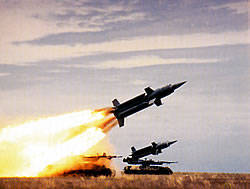 Such a rocket did not leave any chance for the rescue of Israeli pilots (Kvadrat air defense missile system).
Such a rocket did not leave any chance for the rescue of Israeli pilots (Kvadrat air defense missile system).The Israelis were no less successful against Syrian aviation. At the end of the fighting, the Americans even called their F-16 "MiG Killers". The Israeli-conducted operation against Syria's air defense and air force was a revenge for the actual defeat in October 1973, when Syrian air defense weapons inflicted a serious defeat on the enemy.
Both Israel and the United States are still proud of their victory in the Bekaa Valley. That's just both countries are silent, as in fact she got them. And the reason for the success of the actions of Israeli aviation lies not in the weakness of the Soviet air defense systems, but in the successful special operation of the CIA. Over the years 7 American intelligence received top secret information from the traitor Adolf Tolkachev. He served as lead designer at a Moscow research institute and was involved in the development of radar sights for MiGs, guidance systems for anti-aircraft missiles, air-to-air missiles, and the latest identification system. According to the Americans, the traitor saved the USA about $ 10 billion, while his services cost the CIA $ 2,5 million. Knowing the design features (the export anti-aircraft systems did not install passive jamming protection equipment) In service with the Syrian air defense and air force units, the Israeli army was able to easily neutralize the Fed’s forces. As a result, the Syrian MiGs from combat fighters turned into targets, and anti-aircraft missiles from guided ones became uncontrollable. Only in 1985, Mr. Adolf Tolkachev, thanks to information received from the Soviet CIA agent Edward Lee Howard (according to other sources from Aldrich Ames), was arrested and, despite the personal request of US President R. Reagan to MS Gorbachev clemency for the traitor, shot.
At the same time, serious tactical mistakes in the organization of the Syrian air defense grouping cannot be disregarded. The extensive practice of local wars, accumulated by that time, repeatedly confirmed that most enemy aircraft were most often destroyed thanks to the unexpected maneuver of anti-aircraft missile divisions and their competent actions from ambushes (the tactics of the nomadic divisions, and from the experience of the war in Yugoslavia - nomadic batteries). However, stereotypes of the combat experience of the Great Patriotic War and in the 80 of the last century still dominated the minds of many Soviet military leaders. Very often they imposed their views on the numerous allies of the USSR. An example is the role of a number of former high-ranking Soviet generals in the organization of Iraq’s air defense. What results their outdated knowledge led to, everyone knows well (the United States then, in fact, repeated the operation “Artsav-19”).
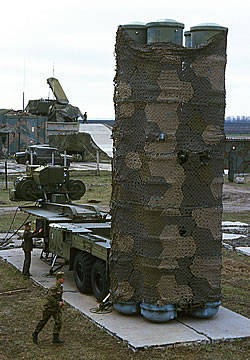 After the flight of Rust, anti-aircraft missile units are rapidly equipped with C-300 air defense systems.
After the flight of Rust, anti-aircraft missile units are rapidly equipped with C-300 air defense systems.History with the defeat of the group "Fed" is very instructive for our time. It is no secret that the C-300 complex (and C-400 in the short term) forms the basis of the Russian Air Force ZRV. The transition to one universal system reduces the cost of production and training, simplifies maintenance, but also carries a serious threat. Where is the guarantee that the new Tolkachev will not be found, which will not transfer to the Americans the technology that allows them to “blind” or remotely shut down (there are already such developments) these famous Russian anti-aircraft missile systems, turning our air defense units from a formidable weapon into easy prey for enemy planes?
As the “five-day war” with Georgia showed, Russia, in addition to international terrorism, has more serious enemies. Washington’s open support for the arrogant attack of Georgian troops on Russian peacekeepers in South Ossetia, as well as the active participation of the US military in weapons, training and information support for the hostilities of the Georgian army confirm that this was in fact a US war against Russia. Only it was carried out by the hands of Georgian soldiers. The purpose of the next military adventure of Washington is exactly the same as in Iraq - American control over global hydrocarbon reserves. If the Georgian blitzkrieg succeeded, the United States had the opportunity to maximally expand its sphere of influence on the oil and gas rich countries of the Caspian region. This means that the military victory of the American puppet M. Saakashvili would allow to proceed to the construction of the Nabucco gas pipeline, (according to it, gas from Central Asia, bypassing Russia, should flow to Europe). However, it did not work out ... Moreover, there were reports in the Western press that during the “five-day war” the already existing Baku-Tbilisi-Ceyhan pipeline was damaged by Russian aviation. The complete failure of the American oil and gas adventure caused a frank hysteria in the West, which suddenly declared Moscow the aggressor and began to whitewash Georgia in every possible way. The question of where the oil and gas pipe passes, who tightens and opens the valve, remains topical (this was confirmed by the New Year gas blackmail, organized by Kiev with the tacit consent of Washington to undermine the European economy and discredit Gazprom).
In continuation of the topic I would like to touch upon the actions of the Russian Air Force during the operation to force Georgia to peace. It must be said that only thanks to the courage and heroism of the Russian military pilots was it possible to stop the Georgian convoy, which broke through in the direction of the Roki tunnel. Pilots attack aircraft, like Alexander Matrosov in the Great Patriotic War, rushed at the enemy as an embrasure DotA and were able to restrain its progress until the approach of parts of the 58-th army. But the work of the headquarters raises many questions. On the first day, the aircraft acted as if it was Chechnya, not Georgia. We have to admit that the Georgian-Ukrainian air defense showed its combat capability. At the same time, the Russian Air Force failed to timely suppress the enemy’s radar and neutralize the work of the Kolchuga-M passive radio intelligence stations (RTR) of Ukrainian production. The Buk-М1 air defense system with Ukrainian calculations was switched on to radiation only for launching rockets, which did not allow detecting their place of deployment. Shooting at targets was carried out mainly in pursuit. As a result, the anti-missile maneuver performed by our pilots was ineffective. Given the number of lost Russian aircraft, it is necessary to recognize that the RTR Kolchuga station and the Buk air defense system, which had been developed in Soviet times, reaffirmed their high combat capabilities.
The results of the operation to force Georgia to the world are compelling to take a fresh look at the decision of the Ministry of Defense of the Russian Federation to reduce 50 thousands of officer positions in the Air Force. It is well known that the training of one military pilot, and of the officer ZRV and RTV, costs the budget a very substantial sum. And such a radical decision to actually write off already made investments in human capital, even from an economic point of view, cannot look like a reasonable one. "Money to the wind" - otherwise such actions of some high-ranking officials can not be called. The famous Russian statesman, Emperor Alexander III said: “... Russia has no friends. They are afraid of our vastness ... Russia has only two faithful allies. This is her army and her fleet. ” Having made a small retrospective look into the recent past, it seems to me that we should not forget about it.
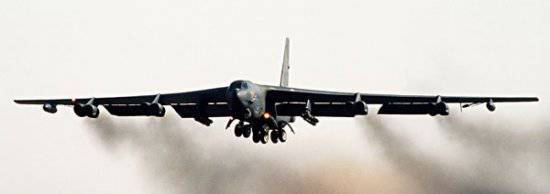
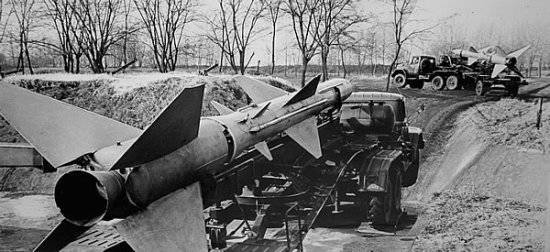
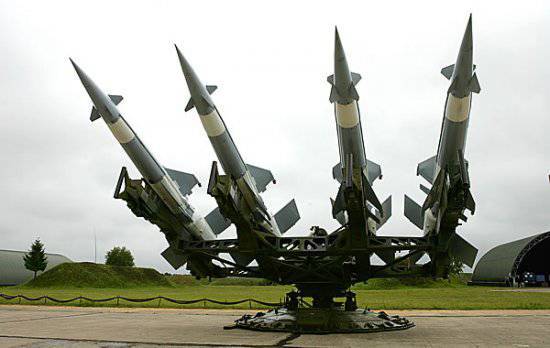
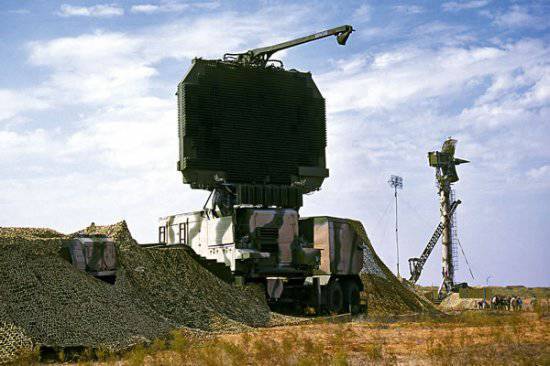
Information